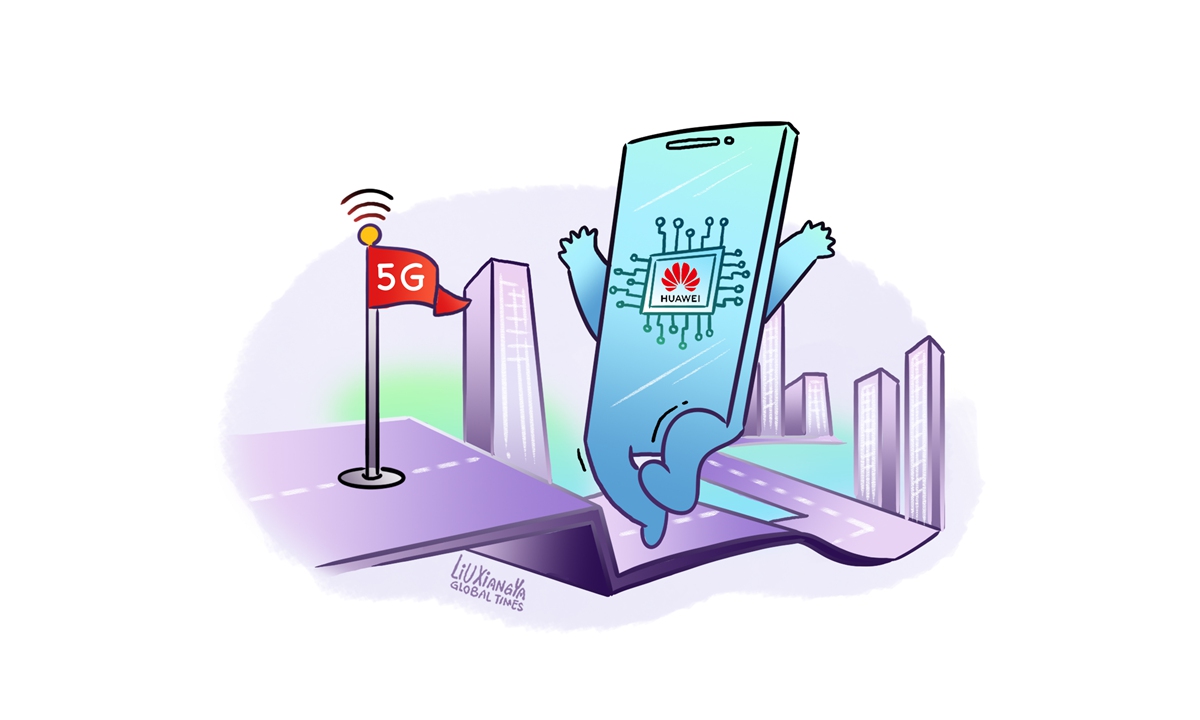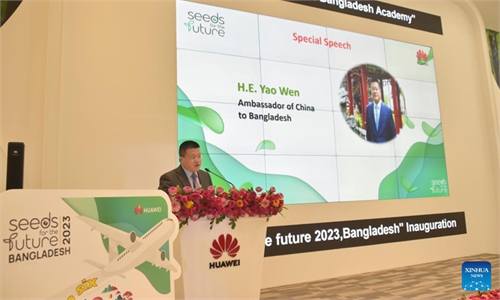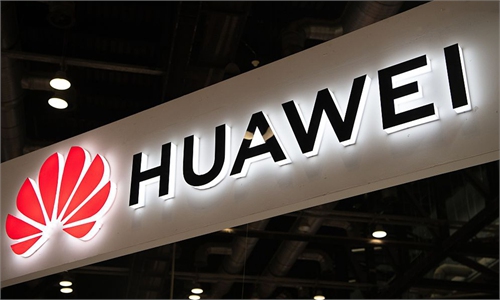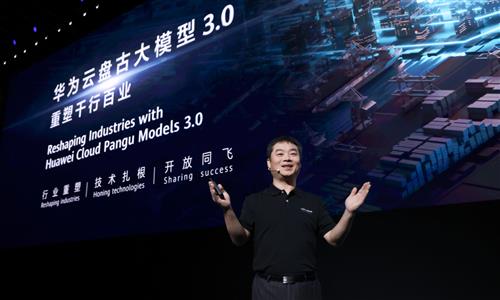
Illustration: Liu Xiangya/Global Times
China's Huawei Technologies is planning a return to the 5G smartphone market by the end of this year, Reuters reported on Wednesday, citing research firms.Although much uncertainty remains, one thing seems clear: In the face of the technological crackdown launched by the US, Huawei is not so fragile as to be defeated.
Huawei should be able to procure 5G chips domestically using its own advances in semiconductor design tools along with chipmaking from Semiconductor Manufacturing International Co (SMIC), China's largest contract chipmaker, Reuters quoted three third-party technology research firms covering China's smartphone sector as saying.
Thanks to the US sanctions, Huawei's flagship smartphone P60 does not support 5G connections. If Huawei can overcome the stranglehold of the US crackdown and relaunch its 5G phones, it will be possible for the tech giant to return to the forefront of the global smartphone market.
The US placed Huawei on a blacklist known as the "Entity List" in 2019, restricting most US suppliers from shipping goods and technology to the company unless they were granted licenses. In the ensuing four years, the US has become increasingly hysterical and unscrupulous in its campaign to contain China's technological rise, but the more the US wants to suppress China, the more it will drive China's independent innovation.
Faced with increasingly fierce global competition, we cannot ask for, buy or beg for cutting-edge technologies in key sectors such as semiconductors from other countries. We must hold these technologies in our own hands, analysts said. The Reuters report has just added to evidence that China has made solid progress in independent innovation.
An inevitable result of independent innovation is a trend in which China's independently developed technology can replace American technology and seize the market share of American products. If Huawei can team up with SMIC to build up a semiconductor manufacturing capacity and produce 5G chips domestically, then US chipmakers will lose some market share to their Chinese competitors, which may not have been anticipated by US politicians who unwisely support the suppression of Huawei.
The US technology suppression against China keeps escalating. The US always tends to believe it is easy to defeat China's high-tech companies. But the longer the tech war lasts, the stronger China's economic adaptability will become. With advances in China's independent innovation, the replacement will occur in nearly every corner of the economy.
From artificial intelligence to robotics, China is beating Western countries in research output on 37 out of 44 technological areas deemed critical for economic growth and military power over the coming decades, according to a report from the Australian Strategic Policy Institute in March.
China's investment in research and development has already grown remarkably over the past few years. Against this backdrop, Washington's tech war does nothing to help US high-tech companies, but only adds momentum to independent innovation in Chinese enterprises, bringing technological competition to its hottest point.
That trend will be even more clear in the coming years, as a lot more will be done to accelerate the development of independent innovation. It is perhaps bad news for US high-tech companies, as their Chinese rivals can take this opportunity to seize more market share from them. It could happen in many areas - not only semiconductors and smartphones, but also engines, batteries, lenses, electric vehicles and others.
Huawei's efforts to return to the 5G phone market may offer a window to observe such "market share substitution." Of course, this process cannot be smooth sailing.
According to Reuters, one of the research firms said it expected Huawei to use SMIC's N+1 manufacturing process, though with a forecast yield rate of usable chips below 50 percent, 5G shipments would be limited to around 2 million to 4 million units.
However, this is a battle both Huawei and SMIC can't retreat from. The US crackdown forces them to move forward. In the process, they will eventually take some of the market share of US chipmakers, and if they succeed, Huawei will return to the forefront of the global smartphone market.
In early June, it was reported that Huawei raised its mobile phone shipment target in 2023 to 40 million units, an increase of 10 million from the target originally set at the beginning of the year. Raising the target demonstrates Huawei's resilience, and confidence as well, amid the US crackdown. We hope and believe that there will be more good news to come.
The author is a reporter with the Global Times. bizopinion@globaltimes.com.cn



